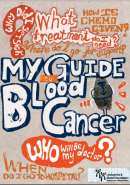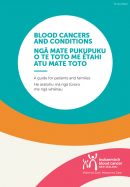Your blood is made up of red cells, white cells and platelets (cells to help your blood clot). Under normal conditions these cells are produced in your bone marrow. They all develop from a small number of healthy immature blood cells, called blast cells. These immature blood cells mature and develop into red cells, white cells and platelets, which are eventually released into the blood stream.
Leukaemia begins in developing blood cells, which have undergone a malignant (cancerous) change. Instead of maturing properly, these cells grow and multiply in an uncontrolled fashion and move out of the bone marrow into the blood. As the cancerous cells grow quickly within the bone marrow, they can overcrowd the space. This disrupts the production of normal blood cells which leads to anaemia and increases the risk of infection.
Video: What is Leukemia? | Cincinnati Children's
The following video explains what leukaemia is. It may take a few moments to load.








